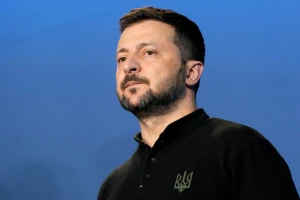
Russians change frontline tactics — military expert Serhiy Zgurets
The Russian Army is trying to gradually transition from Orlans to more modern drones. Meanwhile, in 6-7 months, F-16 pilots will be ready to protect our skies
A change in enemy tactics
According to Artem Romanyukov, commander of the artillery reconnaissance unit of the Armed Forces of Ukraine, the intensity of the enemy's fire has decreased as they shift from offensive to defensive operations. However, Russia continues to employ kamikaze drones in their attempts to destroy Ukrainian artillery, requiring a focus on protecting artillery systems and equipment. The Ukrainian military also needs defense against Lancet kamikaze drones, which necessitates the use of small air defense systems.
Romanyukov believes that the Russian army is gradually transitioning from Orlan drones to more modern ZALA and SuperCam drones. These drones are smaller and present a greater challenge for the air defense systems of the Armed Forces of Ukraine due to their reduced light trail. To enhance the effectiveness of Ukrainian artillery, Romanyukov suggests increasing the number of drones, specifically for reconnaissance and fire adjustment purposes. These drones should have excellent cameras and long-range capabilities. For instance, the SHARK drone could be a suitable response to the Russian SuperCam.
Shifting to a different topic, Valery Romanenko, an aviation expert and leading researcher at the National Aviation University, believes that the enemy is attempting to minimize its losses. The Russian Federation relies on many old planes and retired pilots, lacking sufficient new pilots. Training new pilots requires time and financial resources. By creating mixed aviation units composed of new and old aircraft, the newer planes assist the older ones in bypassing Ukrainian air defense through electronic warfare systems. Consequently, if the older planes are shot down, it would not significantly impact the enemy's capabilities.
The Russian Federation has been silent regarding their helicopter operations. Strikes within the enemy's air units are believed to be occurring, as Russian planes rarely enter Ukrainian territory. Instead, guided missiles are launched from a distance, despite the high cost and limited availability of this approach.
Advantages of the F-16
Throughout the week, we have been discussing Ukraine's imminent acquisition of F-16 fighter jets, with the training process already underway. This raises the question of what benefits these new aircraft bring to our Air Force.
According to Romanenko, Ukraine will receive relatively older models of the F-16 that have undergone upgrades to enhance their combat capabilities. The introduction of these aircraft will significantly boost our country's combat effectiveness, enabling us to engage the enemy on equal footing. This newfound capability will enhance the flexibility of our anti-aircraft defense, making it difficult for the Russian Federation to launch missile attacks from the Black Sea with Kalibrs. Consequently, Ukraine will be able to preserve critical stockpiles of anti-aircraft missiles.
Additionally, if our partners provide Harpoon and JASSM missiles, our forces will have the ability to cover the entire temporarily occupied Crimean peninsula, including the Kerch bridge.
Also, within the next 6-7 months, Ukraine can expect the arrival of highly skilled pilots capable of conducting aerial combat under normal weather conditions. These pilots will be trained to a third-class standard.
- News














































